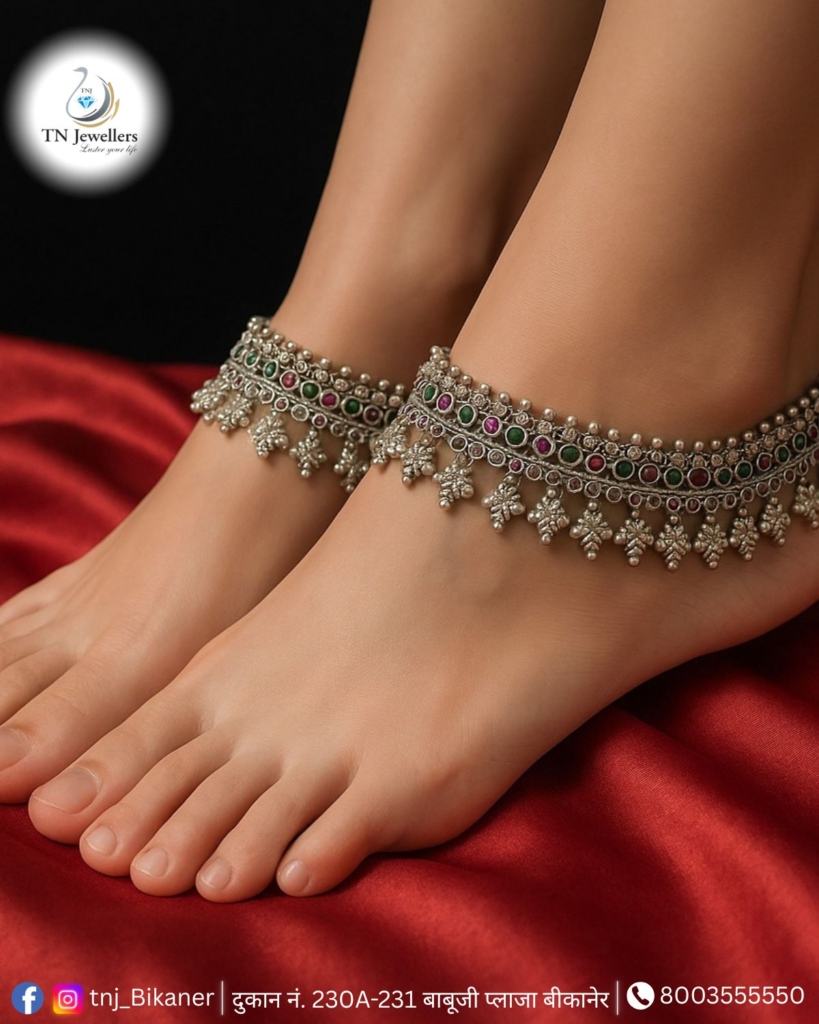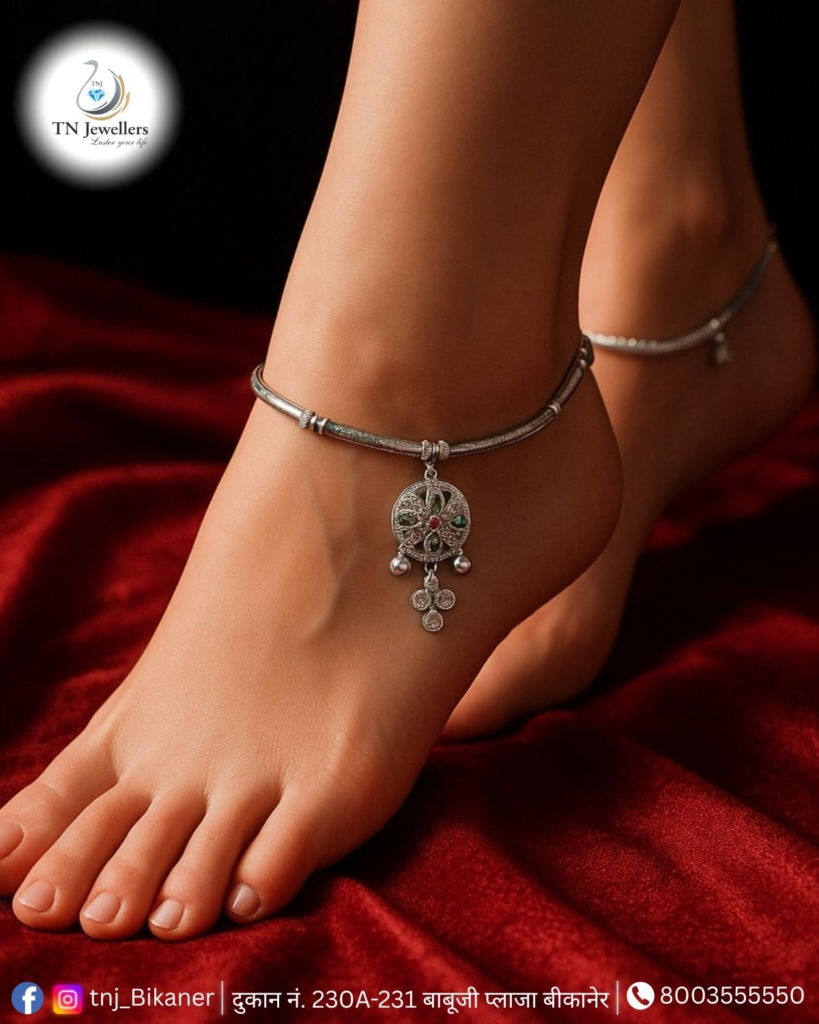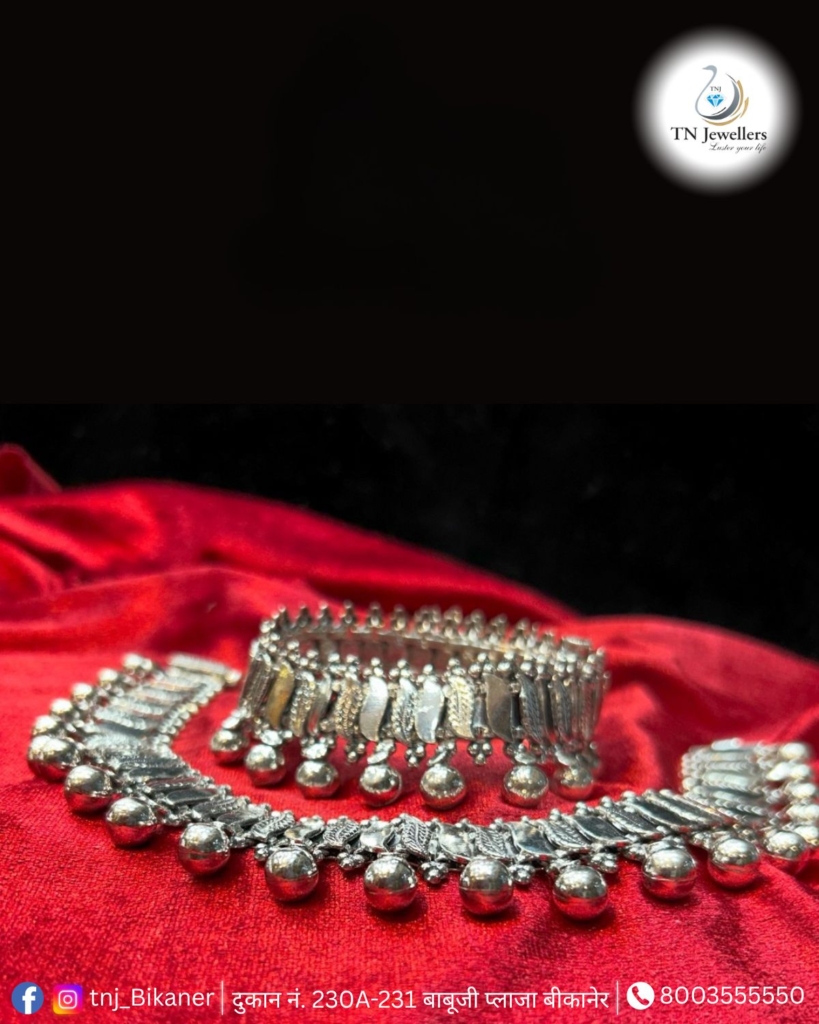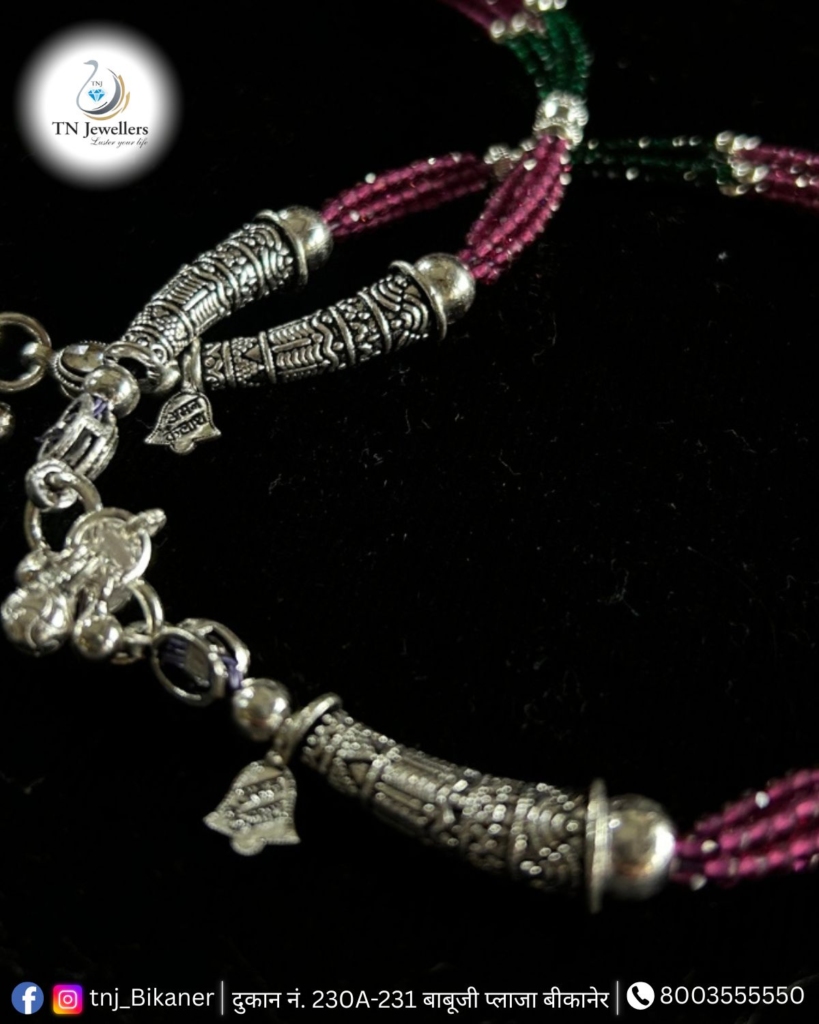In this article,we are going to discuss about the how to tell if your silver jewellery is real a simple guide.Silver jewellery has been cherished for centuries across cultures for its radiant beauty, affordability, and versatility. Whether it’s a delicate chain, a bold bracelet, or intricately crafted rings, silver pieces add timeless elegance to any outfit. But with the growing market of silver jewellery, it’s important to distinguish between genuine silver and fake or plated alternatives. Wearing real silver ensures durability, authenticity, and value — but how can you tell if your silver jewellery is real?In this guide, we’ll walk you through practical, simple methods to verify the authenticity of your silver jewellery at home or with minimal effort. By the end of this post, you’ll be better equipped to identify genuine silver, avoid scams, and take good care of your precious pieces.
If You want to buy Gold and Silver Jewellery than TN Jewellers is the best Gold Jewellery showroom in Bikaner.
Address: Babuji Plaza, Shop no. 230A-231, Old Jail Rd, Bikaner, Rajasthan 334001
Mobile No: +91-8003555550
Visit: Best Gold Jewellery Showroom in Bikaner

Why Does It Matter to Know If Your Silver is Real?
Before diving into the testing techniques, it’s worth understanding why authenticity matters.
- Durability and Longevity: Real silver resists corrosion and tarnish better than many imitations. Fake jewellery can discolor, peel, or cause allergic reactions.
- Value: Genuine silver has intrinsic monetary worth, whereas plated or fake silver may lose value quickly.
- Hypoallergenic Properties: Sterling silver is generally safe for sensitive skin, while fakes can cause irritation.
- Aesthetic Appeal: Real silver has a distinctive luster and patina that enhances over time.
Knowing how to tell the difference saves you from wasting money and helps maintain your collection’s beauty.

What Is Real Silver?
Real silver jewellery is typically made of sterling silver, which contains 92.5% pure silver and 7.5% other metals (usually copper). This blend adds strength without compromising the silver’s appearance.
Pure silver (99.9%) is too soft for everyday jewellery and is rarely used alone.
Fake silver jewellery may be made from:
- Silver-plated base metals (e.g., copper, nickel)
- Stainless steel
- White gold or other alloys
- Cheap metals painted or coated to look like silver

Methods to Tell If Your Silver Jewellery Is Real
Here are some simple and reliable methods to test the authenticity of your silver jewellery:
1. Check for Hallmarks and Stamps
The quickest way to identify real silver is by looking for hallmark stamps on your jewellery.
- Common marks include “925”, “Sterling”, “Ster”, or “S925”, indicating 92.5% silver.
- Some older or artisan pieces may have different marks but typically still show purity standards.
- Be cautious: Some fakes also carry counterfeit stamps, so don’t rely solely on this.
Look carefully at clasps, inside bands, or backs of pendants under a magnifying glass for these marks.
2. The Magnet Test
Silver is not magnetic. If your jewellery is attracted to a magnet, it’s probably not real silver.
How to perform:
- Use a strong magnet, like a fridge magnet or a rare earth magnet.
- Bring it close to your jewellery.
- If it sticks or is attracted, the piece may contain steel or iron, indicating it’s not pure silver.
Note: Some clasps or settings may contain magnetic metals, so test the main body of the jewellery.
3. The Ice Test (Thermal Conductivity)
Silver is an excellent conductor of heat.
How to perform:
- Place a small ice cube on your silver jewellery.
- Observe how quickly the ice melts.
If the ice melts rapidly, it’s a good sign your piece is real silver. Fake silver or plated pieces don’t conduct heat well, so the ice will melt slowly.
4. The White Cloth or Paper Test
Real silver will leave a mark on white fabric due to its tendency to tarnish and oxidize.
How to perform:
- Rub your silver jewellery gently on a clean white cloth or paper.
- If it leaves a grey or black mark, it indicates real silver reacting with oxygen.
- No marks might mean the piece is plated or made of other metals.
5. The Nitric Acid Test (Use With Caution)
This is a more definitive test but requires care and is best done by professionals.
How to perform:
- Scratch a small inconspicuous area of the jewellery.
- Apply a drop of nitric acid.
Results:
- Real silver will turn creamy white.
- Non-silver metals will turn green or may not react.
Warning: Nitric acid is dangerous and should only be used with appropriate safety gear and knowledge. Avoid this test if you’re not experienced.
Read Also :- How to Choose Jewelry for Your Bridesmaids
6. The Sound Test
Silver produces a distinct ringing sound when tapped lightly.
How to perform:
- Gently tap your jewellery with a metallic object like a coin.
- Real silver emits a clear, melodious ring.
- Fake silver or plated metals produce dull or muted sounds.
7. Weight and Size Comparison
Silver is heavier than many fake materials.
- Compare the weight of your piece with a similar size known real silver jewellery.
- A very light piece may be plated or made from cheap metals.
8. Tarnish and Patina
Real silver tarnishes over time due to exposure to air and moisture, developing a thin blackish layer known as patina.
- Fake silver may not tarnish or may peel if it’s plated.
- You can clean tarnish with silver polish to restore shine.

Conclusion
Knowing how to tell if your silver jewellery is real is valuable knowledge for anyone who loves or collects silver. By using simple at-home tests—like looking for hallmarks, checking with a magnet, or observing tarnish—you can quickly identify authentic silver pieces.Remember that no single test is perfect on its own; combining multiple methods gives you the best assurance.Real silver jewellery isn’t just beautiful—it’s an investment, heirloom, and a reflection of craftsmanship and tradition. Protect your collection by learning how to distinguish the genuine from the imitation. Now I hope you have understood about How to Tell if Your Silver Jewellery is Real: A Simple Guide

